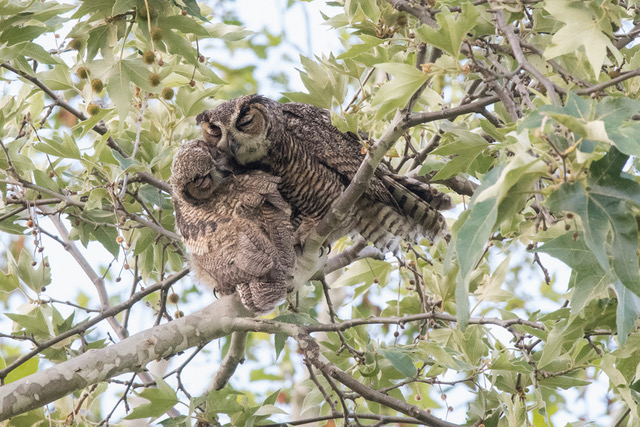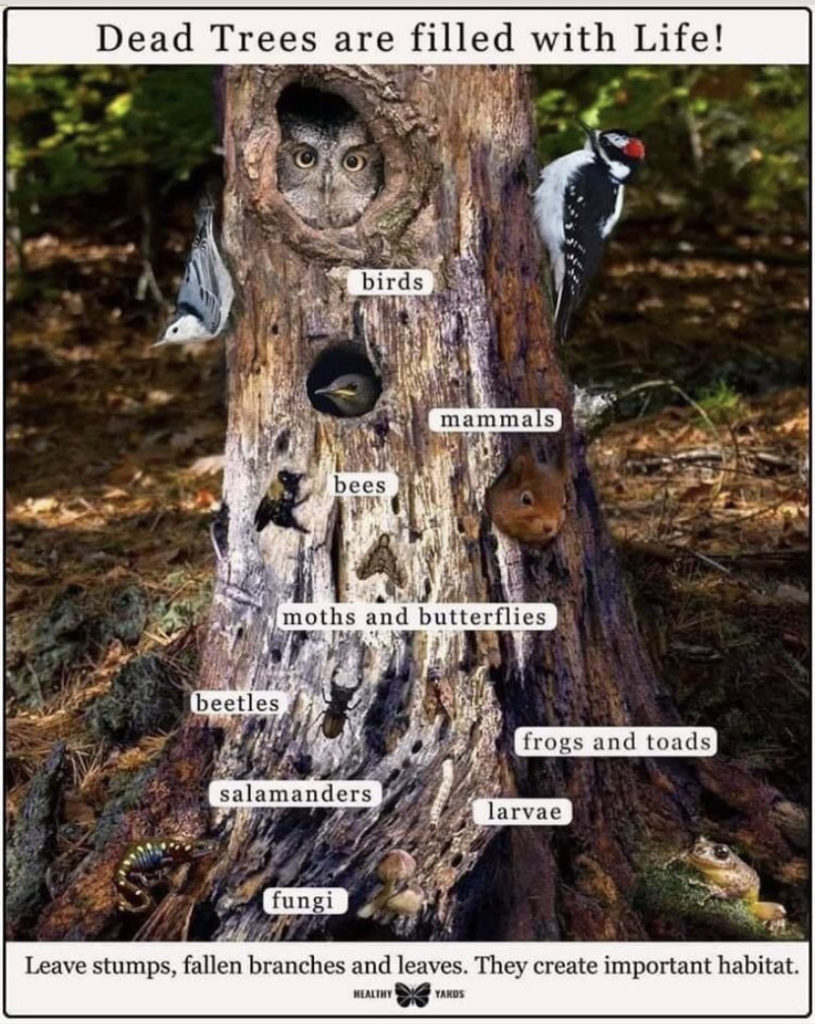
Are you one of the many Richmonders with a bird feeder in your yard? How about a birdhouse? Admittedly both are common, but do you know what’s more ubiquitous (and even better for birds)? Trees! Trees with nuts and seeds to eat; and trees with spreading canopies and homey burrows.
As arborists, one of our jobs is to help manage the urban forest in a way that, ideally, benefits every living organism in the ecosystem. One way we can do that is by leaving habitats for wildlife.

It should come as no surprise that trees are an excellent habitat for animals. Our teams routinely encounter birds, bats, squirrels, opossums and raccoons while aloft in the canopy. When a tree is selected for removal, not only is it a loss to our area’s green space, but it’s potentially a major habitat loss for our furry and feathered friends. As trees age, their cavities, nooks, and crannies provide excellent homes. While some of these trees may pose a potential threat to our homes, it is worthwhile to consider which trees can be left or modified in a way that mitigates risk and allows for wildlife use and interaction.
So how can we balance the needs of a homeowner with those of their animal neighbors? One popular solution is to leave standing wildlife habitats. This is done by taking down a tree to a height where it is no longer a hazard, but leaving the rest standing for birds and other wildlife to make their homes. As the remaining tree decays, animals continue to utilize it for habitat and as a food source. At Truetimber, we commonly leave wildlife habitats in situations where the tree is recessed into the woods, or in areas where access to the tree is limited and more costly. Leaving behind sections of tree when possible means less time spent on the job and more money in a homeowner’s pocket.
The name of this website says it all. We at Truetimber are urban forest dwellers, and, as such, are stewards of the natural environment. If you’ve got a tree that might seem like a good choice for a project like this, please don’t hesitate to give us a call.


